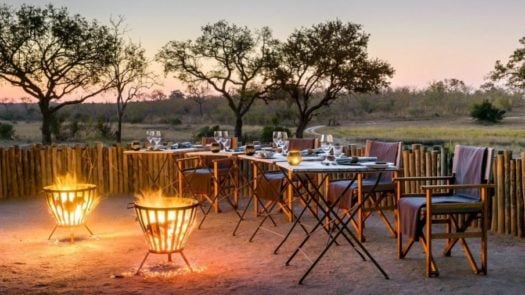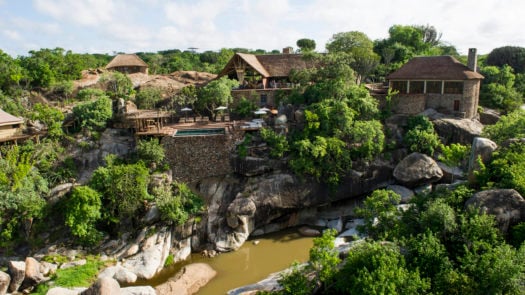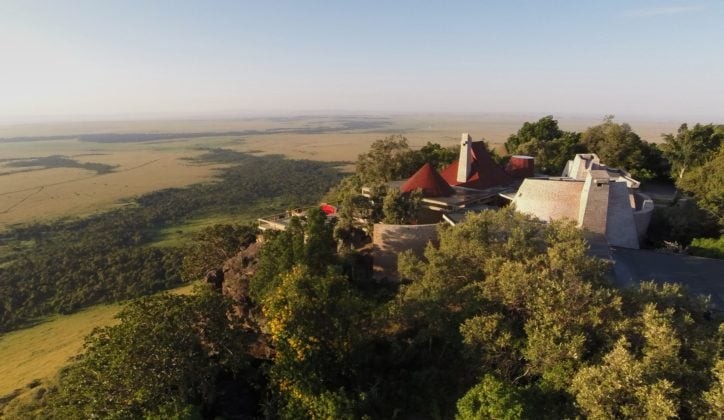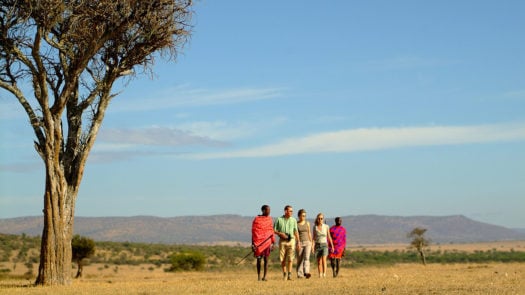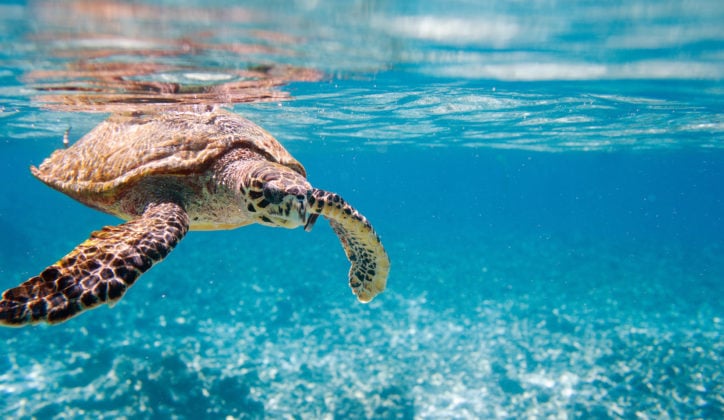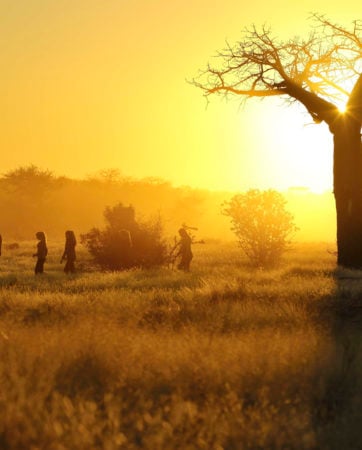Published on: July 6th, 2022
Last updated: June 4th, 2024
Africa is absolutely brimming with incredible places to see animals in their natural habitats. But when planning a safari, it’s easy to get overwhelmed by all the options – not to mention the terminology. With dozens of national parks, conservancies, concessions and private game reserves across the continent, it can be tough to know where to start.
First of all, it’s important to understand the difference between national parks, conservancies and concessions. A national park is publicly owned land that’s managed by the government. Because national parks are open to the public, they tend to be more crowded than conservancies and concessions, which are privately operated.
There are many benefits to visiting a privately owned or managed area. They have less restrictions on things like nighttime game drives and walking safaris, and they’re able to limit the number of visitors in the area at once. That said, the best safari trips often include a combination of national parks, conservancies/concessions and private game reserves.
What Is a Private Game Reserve?
Private game reserves are privately owned and managed wildlife areas. They’re much less crowded than public parks, and only accessible to guests who are staying on the property.
Many private game reserves are located right next to national parks, allowing guests – and animals – to travel freely between private and public land. Others are enclosed areas that offer entirely exclusive experiences. Note that a private game reserve is not quite the same as a concession or conservancy, which are often privately managed but publicly owned.
The Best Game Reserves in Africa
To help you plan the perfect safari adventure, we’ve put together a list of some of our favourite animal reserves in Africa. From private land to community projects, each of these destinations offers unique value to visitors, locals and animals alike.
1. Tswalu Kalahari – South Africa
South Africa is an ideal place to experience the magic of African wildlife up close, and Tswalu Kalahari represents the very best that the country has to offer. This is South Africa’s largest private game reserve, comprising more than 100,000 hectares in the southern Kalahari’s grasslands. The only accommodation is The Motse and Tarkuni House in the entire reserve, which hosts a maximum of 30 guests at once. This means that even at its most crowded, Tswalu has 3,000+ hectares per visitor.
Because Tswalu Kalahari is privately owned, it’s able to offer a wide range of unique activities for guests. For example, you can enjoy a South African safari after dark, on foot or on horseback. Sleepouts give you a unique chance to spend the night under the stars and among the wildlife. And speaking of wildlife, here you’ll be able to see up to 340 bird species and 80 mammal species: rhinos, lions, cheetahs, giraffes and zebras are just the beginning.
2. Sabi Sands – South Africa
Sabi Sands takes its name from the Sabi and Sand rivers, which run through its classic safari landscape of bushveld grasslands. This is one of the oldest private reserves in South Africa, comprising more than 60,000 hectares adjacent to Kruger National Park. It’s also undoubtedly one of the best African reserves, with abundant wildlife ranging from leopards and lions to wild dogs and giraffes.
Sabi Sands is known as an ideal location to see the Big Five, especially since the animals here are used to encountering human visitors. The best time of year for wildlife viewing is usually winter (June–September), but the rainy summer season is ideal for birdwatching.
Here you can track game on foot, go fishing, sleep out in the wilderness, and enjoy other unique experiences – all organised by some of Africa’s most luxurious lodges and camps.
3. Singita Grumeti – Tanzania
No trip to Tanzania is complete without a visit to Singita Grumeti: the country’s largest private reserve. Here you’ll have access to over 140,000 hectares of unspoiled beauty, with hardly another traveller in sight. This reserve is part of the Serengeti Mara ecosystem, an enormous area that’s one of our all-time favourite destinations for the ultimate African safari.
Singita Grumeti offers exclusive access to some of the region’s best spots for wildlife viewing, as well as unique activities like balloon safaris, mountain biking and stargazing excursions. If you time your visit carefully, you might even get to witness part of the Great Migration. This mind-boggling spectacle includes hundreds of thousands of wildebeest, zebras, antelopes and other species as they traverse the Serengeti each year.
4. Mwiba – Tanzania
Located along the southern edge of the Serengeti, Tanzania’s Mwiba Wildlife Reserve contains over 50,000 hectares of surprisingly varied landscapes. This privately managed reserve is a prime place to see a unique part of the Great Migration; it’s where the wildebeest stop their movement for a few months to calve, before starting the cycle all over again.
Mwiba is also bordered by the Ngorongoro Conservation Area and the Maswa Game Reserve, which gives you the unique privilege of access to all three areas. Although it’s relatively small, it only has one permanent camp – so you’re guaranteed to have the wilderness almost all to yourself in one of the top African game reserves.
Where to Stay in Africa's Best Reserves & Conservencies
5. Mombo Concession – Botswana
The Mombo Concession is set in Botswana’s Okavango Delta, claiming 45,000 hectares of the Moremi Game Reserve. The concession’s three safari camps have a privileged position on Chief’s Island, where the delta’s most fascinating animals tend to congregate. Prepare yourself for exhilaratingly close encounters with some truly majestic species.
This area has been called ‘the predator capital of Africa’, so you can probably imagine what kind of animals you’ll encounter here. It’s one of the only places in the country where you can see all of the Big Five – thanks in large part to the Botswana Rhino Reintroduction Project. This innovative initiative has helped endangered rhinos to thrive in the Okavango Delta, with the help of Botswana’s government and Wilderness Safaris.
6. Linyanti – Botswana
This private concession may not be the most well-known destination in Botswana, but it’s absolutely worthy of a visit. Linyanti is an African wildlife reserve located between the Okavango Delta and Chobe National Park, with 125,000 hectares of forests, floodplains, lagoons and grasslands to explore on foot, in vehicles or even by canoe.
Here the focus is firmly on conservation, ensuring that this wildlife corridor is preserved for the animals that call it home – from cheetahs and hyena to buffalo and lions. We recommend a trip to Linyanti in the dry season (June–October), when the wildlife tends to be more concentrated in certain areas. Unique activities include bush walks, nighttime safaris, boat trips and spectacular sleepouts that allow you to truly immerse yourself in your surroundings.
7. Vumbura Concession – Botswana
The Vumbura Concession (locally known as the Kwedi Concession) is a 90,000-hectare area at the northern end of the Okavango Delta. It contains some of Botswana’s most beautiful landscapes, from wide-open plains to lush islands. There are only two camps here – Vumbura Plains and Little Vumbura – ensuring an unprecedented level of exclusivity.
Here you can go on safari at any time of the day or night, wander on foot through mangosteen and ‘sausage’ trees or cruise through lagoons in a traditional mokoro. You’ll observe an unbelievable variety of birds, mammals and aquatic animals, all of which are protected by the concession. This land is overseen by the Okavango Community Trust and leased to Wilderness Safaris, which is also involved in various local projects.
8. Lewa – Kenya
Located in the heart of Kenya, Lewa is an inspiring example of what can happen when conservation takes centre stage. This relatively small area of 25,000 hectares was once a cattle ranch – today, it’s a haven for rare and endangered species. The Lewa Wildlife Conservancy is a non-profit organisation that focuses on protecting wildlife, eliminating poaching, supporting the community and promoting responsible tourism.
Lewa offers all kinds of exciting experiences, whether you’re interested in tracking lions, riding camels, visiting archeological sites or meeting the locals and learning about the conservancy’s work. Of course, the main attraction is the wonderful wildlife, from the black rhino and Grevy’s zebra to the reticulated giraffe and every single one of the Big Five.
9. Mara Conservancies – Kenya
Kenya’s Maasai Mara National Park is legendary for its wildlife and landscapes – but the privately operated Mara Conservancies may be even more enticing. These areas border the public park, and local species wander freely between them. This means you’ll get to see all the same animals that you would in Maasai Mara, but in a much more exclusive environment.
There are 14 different conservancies here, covering more than 140,000 hectares. The Maasai people own this land and lease it out to a few safari camp operators, which use the resulting income to empower local communities. This arrangement not only allows for unusual experiences like bush walks and nighttime safaris, but also gives you the chance to connect with local residents in a much more meaningful way.
10. Marienfluss Conservancy – Namibia
The 330,000-hectare Marienfluss Conservancy is set in the Kunene Region, an incredibly remote part of northern Namibia. Here, the Kunene River creates a vibrant ecosystem that’s a stark contrast to the barren desert around it. The conservancy is owned mostly by the local Himba people, who partner with camps like Serra Cafema to preserve the environment and empower the community.
A stay at Serra Cafema offers endless opportunities for adventure, from nature drives and quad biking to guided walks and stargazing. You can also visit a Himba village to meet some of the local residents. Keep in mind that the only way to reach this conservancy is by light aircraft – it’s quite literally off the beaten track.
Our Team's Favourite Trips to Africa's Best Private Reserves & Conservencies
Embark on a wildlife adventure
Deciding on your next adventure can be challenging, but our team of safari experts are here to guide you through every step, ensuring your safari takes you to the best private reserves and conservancies, spotting extraordinary wildlife and more along the way.






